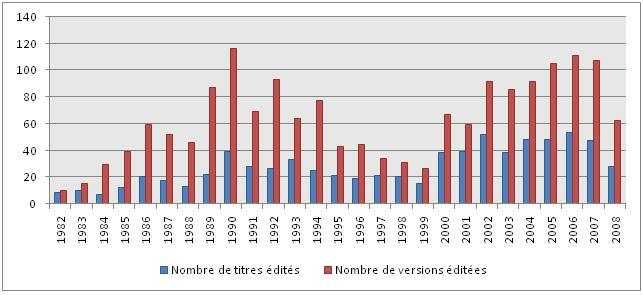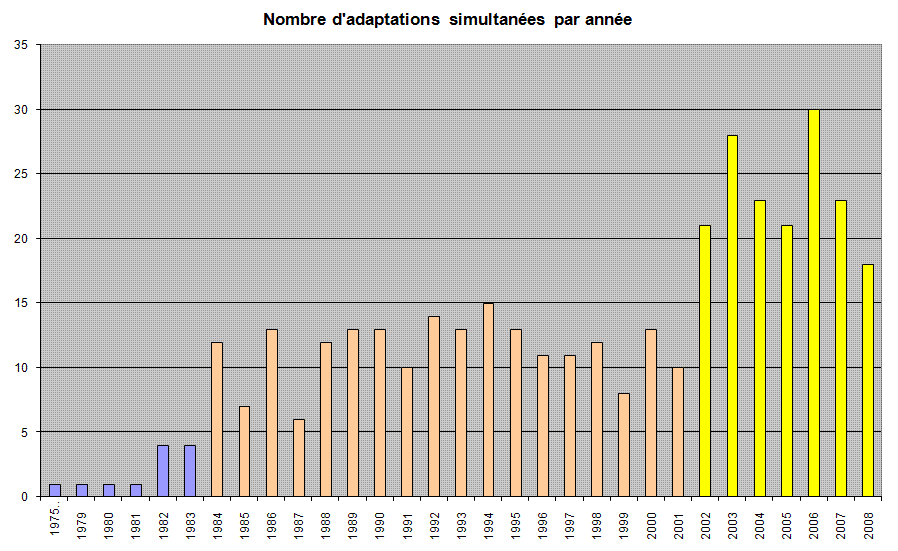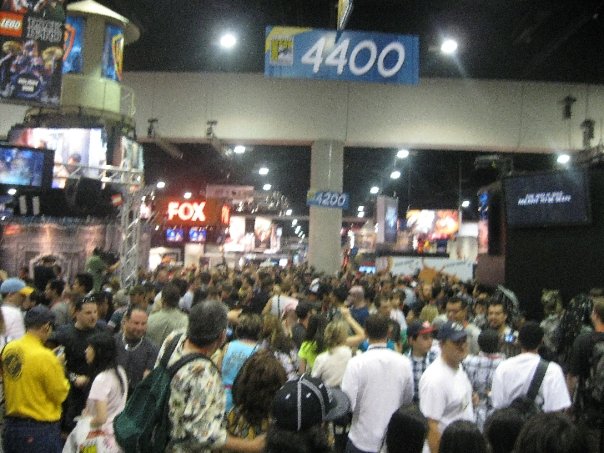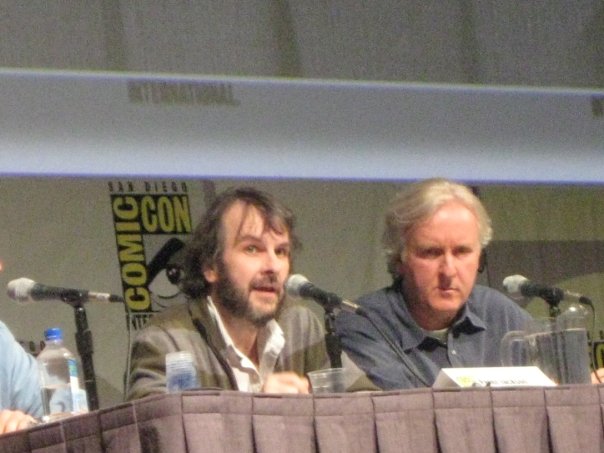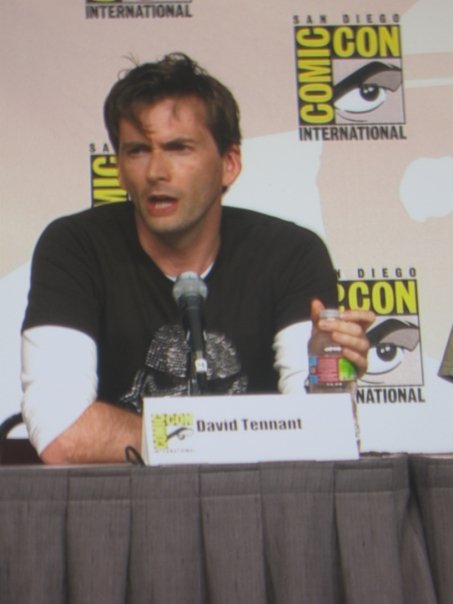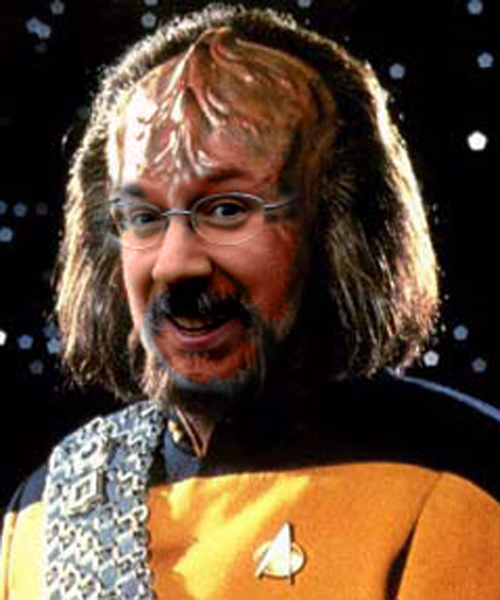Transmedia Tacos? You Bet!
/I recently asked the students in my Transmedia Entertainment and Storytelling class to write short analytic papers on examples of transmedia extensions. I ended up with papers on amusement park attractions, mobisodes, web sites, comic books, computer games, and a range of other media which have been used to expand our experience of popular media franchises. I was impressed across the board with my students's grasp of core transmedia concepts which have proven elusive in public discussion of the concept. Of these papers, this one by Benjamin Burroughs caught me by surprise, since it is exploring the way that transmedia tactics are moving from the entertainment industry to other sectors - in this case, the food industry. Here, Burroughs describes the ways that a local LA vendor has become the source of fascination for highly wired local residents, creating a mystique and perhaps even a mythology around the migrations of a taco truck. Indeed, as this paper suggests, I started to hear rumors of this truck before I even moved to LA, suggesting that the spread of this information extends well beyond the local community.
I would be curious to know whether readers can point to other examples where transmedia strategies are being deployed to create or promote local brands.
Transmedia Tacos: Hybridity, New Media, and Storytelling
By Benjamin Burroughs
The first way I ever heard about the legend of Kogi begins with two ever-present facets of my life, hunger and late nights. While deliberating on where to possibly satiate this beastly hunger at such an hour a group started talking about food and re-telling experiences of recent adventures in dining. This is where I was told about the Kogi myth.
Uncle John (no relation, a local Hawaiian title for esteemed family friend) told my wife and me about his first trip in tracking down an elusive Kogi kimchi taco. He explained that the truck stops at different areas and, despite being hesitant, he agreed to go with his friend to get this taco he heard so much about. He said when his friend took him to the spot there was a really long line. He waited in the line for a half an hour and then an hour and just as he was going to get a taco they ran out.
I was not only puzzled but stunned that an engineer like Uncle John was going to wait that long for just a taco. He said they go to a place and serve until they are out of meat. I found it silly to a certain degree but promptly looked at my wife as if to say, 'I got to get me one of those kim chi tacos' (and I don't even remotely like kim chi).
That began our first foray into searching out the 'Kogi dragon'. I googled the thing, read the website, looked up its twitter feed, jumped in the car and literally tracked its movement to a place in Little Tokyo not far from our apartment. Uncle John would no longer be the only privileged purveyor of information. When we arrived I was awed, a huge crowd of people--a diverse cross section of Los Angelenos had converged on this taco stand at just after 11 pm at night. We waited in that line for what seemed like hours (because it was!) and I tasted the forbidden elusive fruit for the first time. I hate kim chi and cilantro but oddly enough I really like these tacos, especially the short rib tacos and kim chi quesadillas. Seriously, you should go try some.
So what could be remotely transmedia about a taco? How can a taco be conceptualized as an integral part of the transmedia storytelling process? It's just a taco not a new medium, right?
We begin by diagramming some of the transmedia components that construct this particular transmedia franchise built around food before moving on to its theoretical justifications. What exactly is this Kogi I was hearing so much about? Kogi has not been around for very long. The company started with one truck last November and has since spawned what some have called a mobile eating revolution. Kogi has gone from one truck to many trucks, including a stationary sit-down restaurant. Awards have come pouring in, along with plenty of media coverage, as Kogi has been reported in every major newspaper from the Los Angeles Times to the New York Times, even being listed as one of Jonathan Gold's 99 top LA eating experiences.
As we unpack the buzz surrounding this purported new media innovation, we hope to uncover through our own personal familiarity how this tiny truck stand is blazing a path for transmedia possibilities in food distribution and consumption. It is important to note that we are not looking at a mature transmedia franchise but are looking for where this my take us in an attempt to synchronize the transmedia model to more seamlessly sew together online and offline disjunctures as well as multiple media platforms.
Transmedia Mechanics
Kogi is first and foremost a truck and it is safe to understand the stand and its food content as the 'mothership'. Trucks are one of the oldest modes of food distribution and taco trucks have a particularly rich tradition. With a truck you can constantly be advertising and the truck can construct a unique dialogue with the consumer saying--look, we are one of you, we drive around to the same places and serve you food in your own locales. We are not different, abstract entities or identities but part of the community.
However this form of appeal has seemed limited, trucks as the primary form of food distribution as a business model have largely been untenable, especially in terms of franchising and expanding a company beyond a particular locality. Kogi's uses of new mediated technology and multiple platforms of this technology have attempted to bridge the gulf between the producer and consumer. No longer is the chef a distant 'other' in the back of a large restaurant but is now in close proximity and spatially there is the perception of closeness.
Taking the food to the streets takes on a form of renaissance--a return to a perhaps mythic, forgotten age when food was more interactive and participatory. The truck not only gives a sense of 'street cred' and raw authenticity associated particularly with Mexican taco stands (eating 'real' Mexican as opposed to Taco Bell, although Taco Bell has now gotten into the mobile taco stand game as well, mimicking the perceived success of these start-up franchises). Kogi also has a certain novelty about it because of its manipulation of new technology. Mobile food stands are not new to the cultural food landscape, but this recent re-articulation has been acclaimed as such because it is not just building a relationship with one community but enables a linkage to the cultural heartbeat of an entire city, even one as vast and diverse as Los Angeles.
If we understand transmedia as the reading of multiple texts that help to tell a larger story can we not see the truck as a text not only in its self promotion and banners but in its very form? The truck is speaking to an age of increased mobility, flexibility (flexible specialization), and fluidity in our culture. Can we not read the taco as a text that speaks to the hybridity of a culture and society where Korean kim chi and Latino tacos are representative of larger forces of cultural fusion?
Lastly, as we learned on the very first night of our taco pilgrimage, there is a sociality present in these long lines. These crowds identify and interact with each other, relating experiences with the food--what one should try, particular favorites, where else one could eat in a great blending and sense of communal participation inherent in any vibrant, lasting transmedia franchise. These sorts of informal media channels can and perhaps should be included to enlarge our understanding of transmedia. In our Kogi example this form of knowledge exchange and 'encyclopedia capacity' (Murray 1999) exists less in mediated spaces than other transmedia franchises but there is certainly potential for future transmedia food projects to explore more deeply how to connect consumers in the purely online context. Again, however, it seems important that we not de-value the informal gift exchanges of information that happen in specific communal contexts such as the public practice of waiting in line.
Tweets and Eats
This brings us to the next transmedia component: an online presence. So we have the taco and the stand and even the line as transmedia extensions but what ties these together is the utilization of new media technology. '
First you have the Kogibbq.com website run by the sister of one of the founding members, Aliiiice (this is how her screen name is presented on the blog). Interestingly enough, she lives in New York. She has her brother send her pictures of the food as she updates the community on what is going on with Kogi, portraying an interactive story of the growth and some of the inner workings of the company. She makes things very participatory, engaging the audience by allowing the community to help decide on the names of the new trucks, introducing the personalities of the staff, and explaining the stories behind new foods coming out. This is where Kogi adds a level of seriality (Haywood 1997).
Not only is seriality built into the food process, wanting to eat more after chowing down on a tasty morsel but Alliiice gives you the latest creation from chef Roy Choi so you have a reason to go back every week. People like what they have already eaten so when presented with a new concoction they are hooked into coming back. This is also the logic behind the majority of food advertising but such grand productions lack the intimacy and trust that Alliiice has massaged by being close to the community. She participates quite deeply with the readers of the blog, often commenting herself in the comments section of the blog in a very personal and 'real' manner.
What is most compelling however, is not only the intimacy, but the descriptions of the food. I have on more than one occasion sought out the truck because of what I had read. Sometimes the food is a one day special, so you are literally compelled by the pictures and descriptions to not miss the food served only on that particular day. I am currently thinking about needing to go and get the 'Ride or Die Sweet and Sour Chicken' I just read about.
These are essentially food stories, narratives that shape our encounter with the product and add layers of meaning to that experience. Recently this story was put on the website about a Cuban pressed pork dish. Alliiice writes:
"Once upon a time, there was a bun of Pan BLanco. A piLLow-soft, innocent loaf of angeLs' bread fresh from the warm confines of a simpLe baker's oven.
::SLiiiiiiiiiiiCE!!::
It was a quick and siLent death. Witnesses caught but the quick fLash of a cook's knife and two, snow-white ovaLettes faLLing away from the unforgiving bLade of the kitchen guiLLotine.
Two hands grabbed the symmetricaL, soft remains of Pan BLanco and shoved them face down on a redhot griLL. Fat sLices of juicy red summer tomatoes and spicy pork gathered 'round to mourn her death. But before they couLd pay their proper respects, the Hands of Death snatched her from her grave and sLathered her insides with fatty, unctuous gLobs of chiLi mayo."
It is hard not to get hungry just reading that. But this is not the only level of storytelling that is going on. The use of Twitter has moved these stories from static places online to dramatic emotion laden episodes that one can act out as adventures.
A series of youtube videos sprung up around the beginning of Kogi as part of its marketing strategy but also spontaneously as active audiences filmed and put on the web their own personal treks to find the Kogi tacos.
One of the first to do this was a local area DJ named akaider, the title was called "Chasing the Dragon (The Kogi BBQ Adventure)", who was later invited to start performing alongside some of the trucks stops in Little Tokyo in response to his video.
The twitter feeds make this very participatory. There is an emotional resonance when people are given a space to play and perform as audiences feel empowered to collect the information and connect the dots of where the truck will be at any given place and time. There is a certain degree of prestige in uncovering the buzz, but also great pleasure in sharing that gift in and through social exchanges.
This is mobile hypersocial technology (Ito 2008), as twitter allows for a conversation never before possible. Twitter feeds and tweets tell about the truck coming to an area, if it is stuck in traffic, if the cops made them move to a new area, or if they ran out of food for the day. People want to collect this information and have that 'insider' information on the next big eating thing. This knowledge is especially valued in eating circles as a form of status and coolness associated with the pooling of privileged information.
Transmedia Futures and Cosmopolitan Aesthetics
Food is compelling; it is an integral part of our lives. Although not being altogether obvious, it is not too far a stretch to contextualize the purchasing, eating, dining--the consumption practices of food as interwoven in the very fabric of our lives. Food is conducive to good stories. Food is universal and ubiquitous; we all eat (although economic and cultural stratification are prevalent and important processes beyond the scope of this paper). The consumption of food is often a highly public, commercial enterprise. Food consumption is a hypersocial activity.
Living in an age of convergence culture (Jenkins 2006) where consumers are the point of convergence, appropriators and re-mixers of form and meaning, how will this shape our relation to something as recurrent as eating? A convergence culture is participatory and demands for the reorganization of production.
Kogi is a small example of the new spectatorship that creative artists can maneuver to empower a deeper synergy between production and consumption (or future prosumption) as chefs and diners, food critics and passive consumers can all benefit from the increased connectivity and emotional resonance afforded through transmedia productions. What is going on is the sharing of privileged knowledge and information conveyed as a narrative construction.
Perhaps we really are what and how we eat. Kogi can be representative of larger shifts and cultural trends. It is a Korean and Latin fushion cooking driven by new mediated technologies and platforms that allow for increased sharing and participating. Transmedia has a certain cosmopolitan aesthetic and democratic participation that should be cultivated as we move further into the hybridity and diversity of a networked world.
Sources
Jennifer Haywood, " Mutual Friends: The Development of the Mass Serial," Consuming Pleasures: Active Audiences and Serial Fictions from Dickens to Soap Opera (University of Kentucky Press, 1997), pp. 21-51
Ito, Mizuko. 2008. "Networked Publics: Introduction." Pp. 1-14 in Networked Publics, edited by K. Varnelis. Cambridge, MA: MIT Press.
Henry Jenkins, "Searching for the Origami Unicorn: The Matrix and Transmeda Storytelling," Convergence Culture: Where Old and New Media Collide (New York: New York University Press, 2006), pp. 93-130.
Janet Murray, "Digital Environments are Encyclopedic," Hamlet on the Holodeck: The Future of Narrative in Cyberspace (Cambridge: MIT Press, 1997), pp. 83-90.
Ben Burroughs is currently completing a double degree Masters program from the Annenberg School for Communications and Journalism and the London School of Economics and Political Science in Global Media and Communications. He has authored several publications including "Kissing Maccaca: Blogs, Narrative, and Political Discourse "(2007), and is hoping to pursue a PhD in the coming fall. His research interests include: civic transmedia, politics, emergent fandoms, and media anthropology. Ben is a former high school French teacher, who grew up on the North Shore of Oahu. He and his wife presently reside in Los Angeles.

![Reblog this post [with Zemanta]](http://img.zemanta.com/reblog_e.png?x-id=39752049-a5c5-4d68-a4e0-619c76c55cc9)
